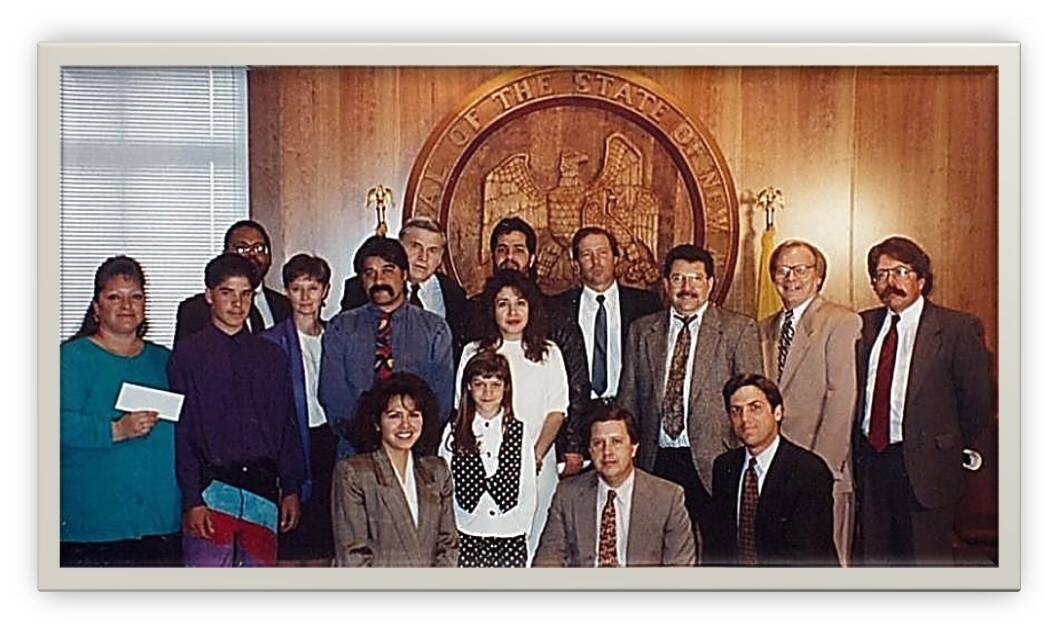The History of MFA

An innovative $202 million transaction that refinanced one-third of Housing New Mexico’s existing bonds generated a $12 million refund to Housing New Mexico in 1992. Just over $2 million of the refund was dispersed to 387 homeowners with Housing New Mexico loans, some of whom are pictured here at a signing ceremony with then Gov. Bruce King. The remainder of the refund was used to create several new Housing New Mexico funding programs that are still in use today.
The refinancing of one-third of Housing New Mexico’s bonds in 1992 generated a $12 million refund to Housing New Mexico. Approximately $2.2 million of the bond refunding was used to give rebates to 387 homeowners with Housing New Mexico loans. The homeowners came from 20 counties and received individual rebate checks that ranged from $1,900 to $9,000.
The bond refunding also recapitalized the Housing New Mexico general fund with excess revenues of $12 million, which Housing New Mexico used to create several new programs. The programs, which include the Housing Opportunity Fund and Primero, are still in use today and provide funding down payment assistance and construction loans.
The refunding marked the beginning of other growth for the agency including:
- Creation of the Partners Program, which is used to purchase mortgages from nonprofit housing organizations as a way for them to generate operating capital. One of the biggest recipients of this program is Habitat for Humanity New Mexico. To date, Housing New Mexico has purchased 251 Habitat mortgages for a total of $14.7 million.
- Housing New Mexico’s selection to participate in a unique HUD program dedicated to the production and preservation of affordable apartments marked the beginning of Housing New Mexico’s move into affordable housing development. The program was called the Risk Sharing program, and it is still used to finance apartment homes. Since 1995, Housing New Mexico has provided almost $160 million in Risk Sharing loans to build more than 5,200 units on 58 properties.
- Housing New Mexico was the first housing finance agency in the nation to expand the use of federal HOME funds to Indian trust lands, and it still surpasses every other HFA in the investment of these funds in tribal initiatives.
- Housing New Mexico began using a “personal computer local area networking system that uses three kinds of software.” The new system allowed Housing New Mexico to capture and process data without adding additional staff.
- A financing structure was developed that allowed Housing New Mexico to package individual mortgage loans into pools of loans.
- Housing New Mexico began training for real estate professionals that included continuing education credits. Currently, Housing New Mexico has two dedicated staff members who travel the state providing training.
- Housing New Mexico received a HUD grant to fund pre-purchase homebuyer counseling through seven nonprofit agencies.
